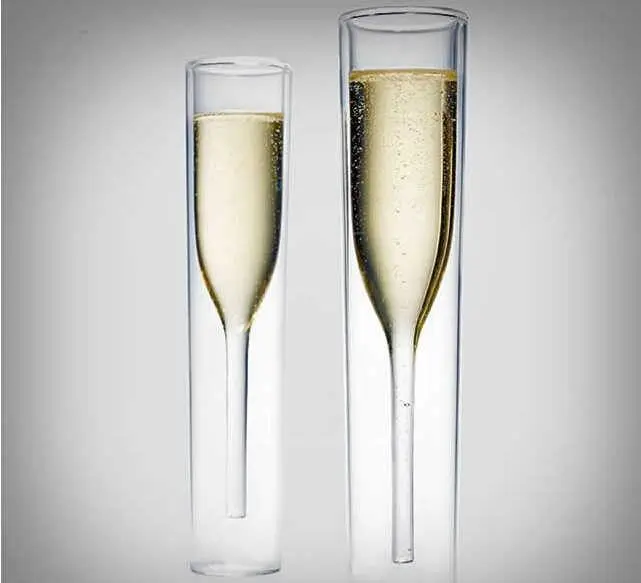Champagne glasses are specially designed to enhance the taste of sparkling wine. While in Russia thin flutes are more accepted, in Europe and the USA “wine with bubbles” is often drunk from glasses-bowls (otherwise – goblets), especially at ceremonial events. The main feature of both forms is a high thin leg, which allows the taster not to touch the vessel itself and not to heat the drink. Interestingly, in glasses of different shapes, the same champagne can have a different bouquet and aroma.
Common features
Connoisseurs say that, regardless of type, champagne glasses should have the following characteristics:
- Material – glass, and better – crystal, but in no case plastic, because. it affects the taste of the drink. Crystal is stronger than glass, therefore, the walls of the glass can be thinner, and the contact of the material with the drink, skin and taste buds is less.
- The pointed bottom of the bowl, in which bubbles can collect and rise up.
- A bowl that expands towards the middle, allowing the aroma to reach its maximum concentration.
- A tapered but wide enough top to hold the aroma in the glass and make it comfortable for the taster to drink.
Famous brands: Riedel, Spiegalau, Schott-Zwiesel, Zalto.
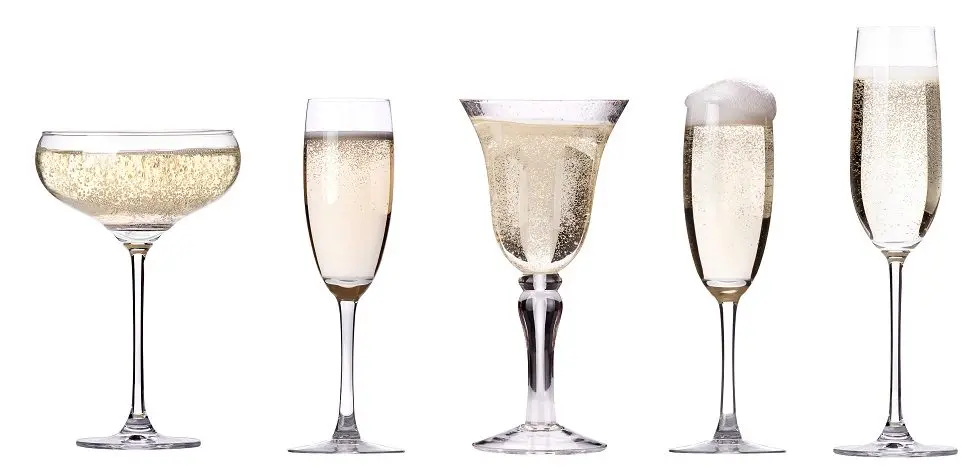
Types of champagne glasses
Wine glasses (flute)
A champagne glass (otherwise – flute, “flute”) is a narrow glass with a cone-shaped bowl that can hold from 180 to 300 ml of wine. This form appeared in the early 1700s, when glassware began to replace metal and ceramics everywhere. Initially, wine glasses were strictly conical, now there are direct variations, as well as glasses that are slightly tapering upwards.
The Russian variation of the name comes from the French city of Fougères.
This form preserves the taste and aroma of the drink in the best possible way (although it does not allow them to fully open up), and also does not allow the champagne to “run out of steam” quickly. In addition, a thin glass of sparkling wine looks beautiful: the golden liquid shimmers in the light, the bubbles rise up in an elegant chain.
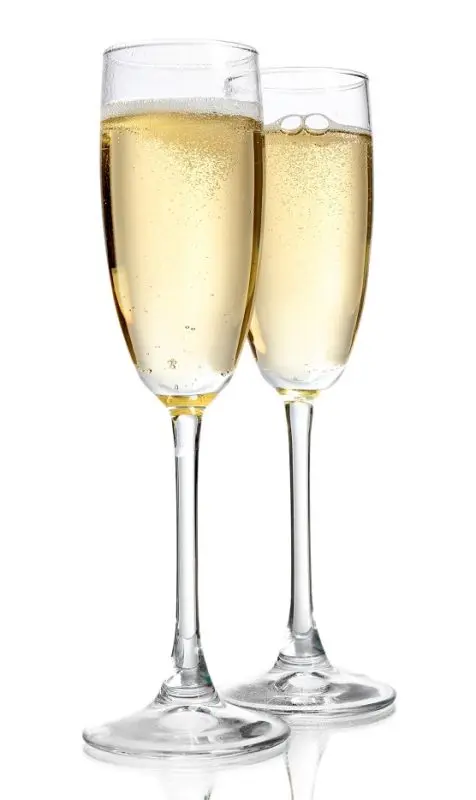
Traditionally, glasses are used for champagne and other sparkling wines, but some beers (such as lambics and gose) are also served in them. Especially recommended for tasting Cremant, Cava, Champagne Extra Brut.
Due to the narrow bowl, which does not concentrate the aroma well, wine glasses are considered ideal glasses for tasting not very high-quality sparkling wines with obvious taste flaws. This form will not allow the “roughness” to open up and preserve the maximum degree of carbonation of the drink.
cups
Champagne cups (otherwise – coupe, “bowl”) are a glass with a high stem and a wide, but shallow bowl, more like a saucer with high edges, containing 120-240 ml of wine. Legend has it that the shape of the glass exactly repeats the outlines of the breast of the French Queen Marie Antoinette, but in fact the “goblet” for sparkling wines was invented in 1663 in England. In France, these glasses appeared only in the early 1700s, but immediately gained popularity, but in the 1970s their use began to decline. In the US, the peak of popularity of “cups” came in the 1930s-1980s.
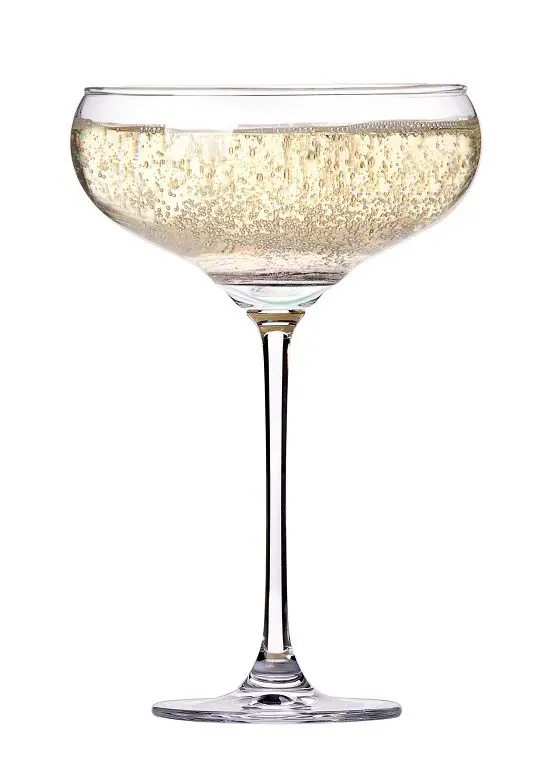
This form is not very convenient for direct drinking, besides, the wine quickly fizzles out, but from the “cups” you can build an effective pyramid and spectacularly pour champagne into all glasses at once. It is also customary to serve sweet sparkling wine, for example, Asti Spumante.
Tulips
Tulip (tulip) is a glass with a relatively short stem (although this parameter may vary) and a wide “pot-bellied” bowl, first tapering, and then slightly opening up, like flower petals. Traditionally, these glasses are used for white wine, whiskey and beer. However, some sommeliers believe that this form is also great for champagne, since the drop-down top allows you to better feel the aroma of the drink, while the rather narrow “neck” keeps the bubbles.
Particularly well suited to wines with a rich fruity-floral bouquet, such as Prosecco or Rosé.
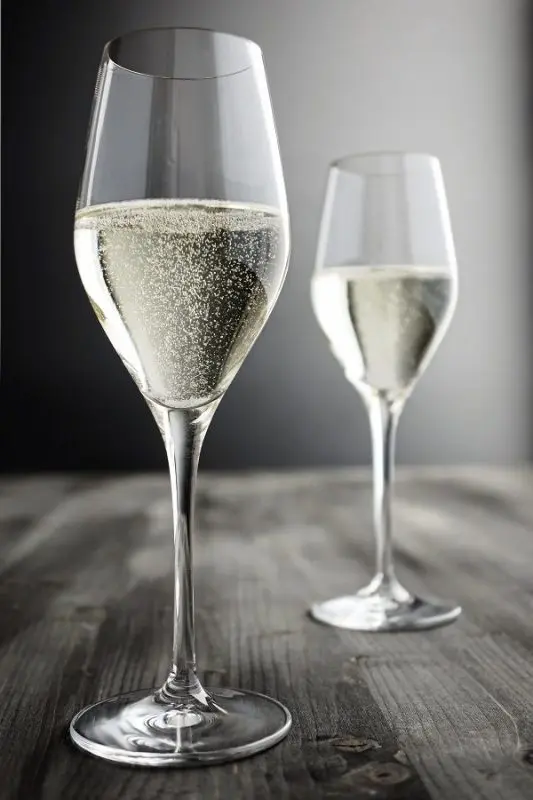
A subspecies of this variant is the “wide tulip”. As the name suggests, it is a “tulip” with a wider bowl. It serves aged sparkling wine, in which notes of dried fruits, biscuit, creamy cakes are felt.
Experts believe that the “tulip” is perhaps not the most elegant, but the most “honest” form, emphasizing all the shortcomings of the drink, therefore, best suited for an impartial assessment.
Double layer glasses
In the 1960s, double-layered glasses appeared on the market to prevent the drink from being heated by the taster’s hand, but they never entered wide use. Perhaps not least because champagne does not look very impressive in them, and the aesthetic component is very important in serving sparkling wines.
